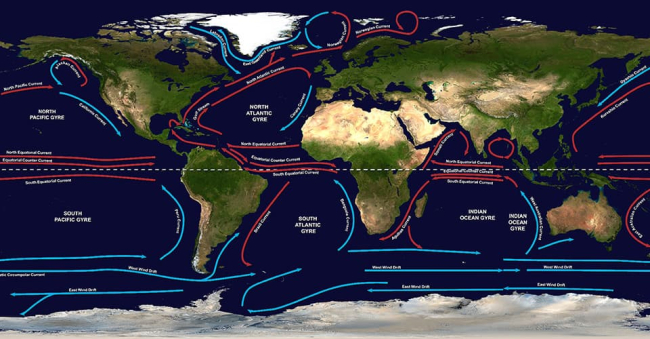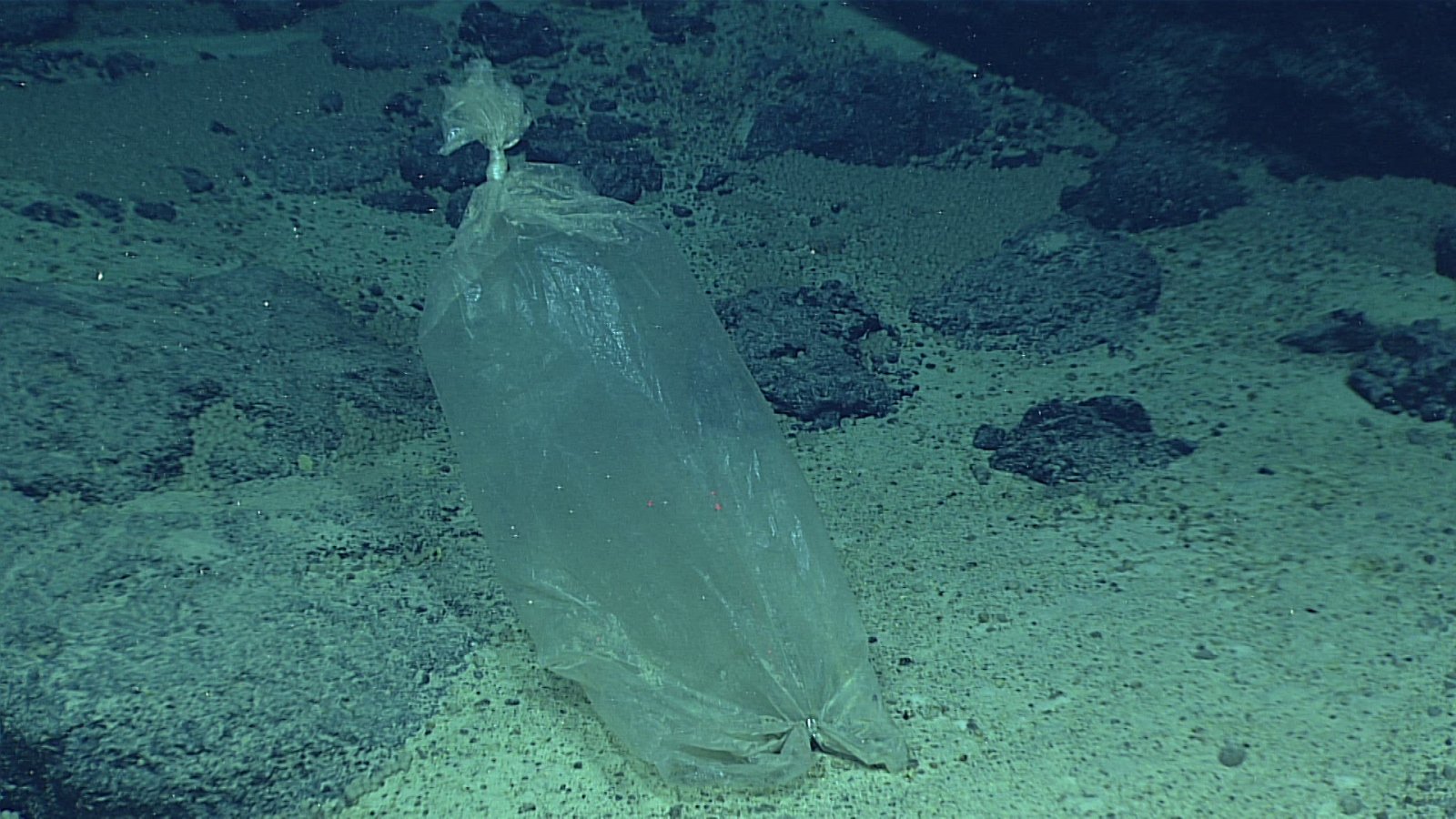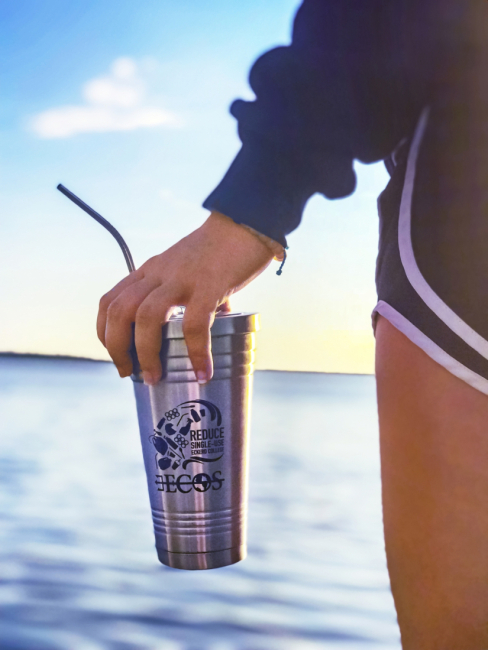This week, we're taking a look at how pollution travels. Whether it be a plastic bottle riding an ocean current thousands of miles away, or hazardous material working its way up an ecosystem, pollution often has a way of spreading. In this blog from OR&R's Marine Debris Program, learn about how marine debris travels, and what you can do to help. Learn more about how pollution travels on our website.
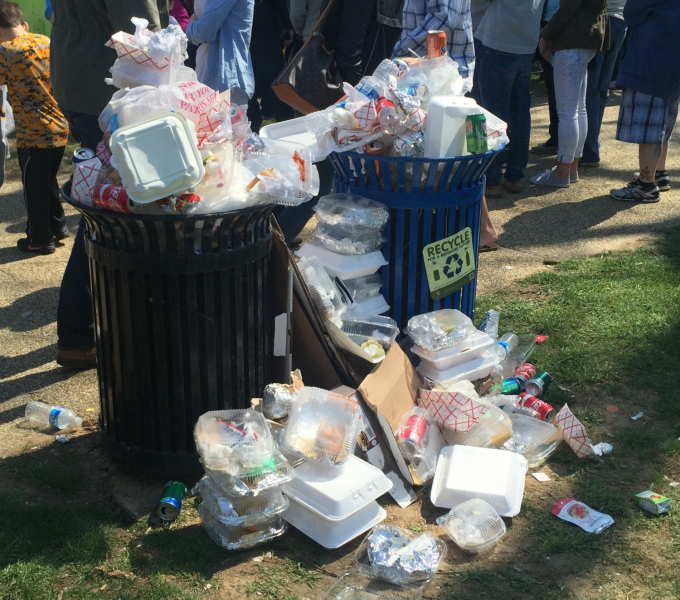
People aren’t the only ones who travel the world! A simple plastic bottle can easily travel from inland areas into the far reaches of our ocean as marine debris. Picture a lovely summer day. The park is full of happy people enjoying themselves. A few stop at a local restaurant and pick up take-out or drinks to eat outside. Some of them get ready to responsibly dispose of their trash in the appropriate bin, only to find that it’s full! They neatly place their waste on top of the growing pile around the trash can. After all, we’re miles from the ocean—how far could this one bottle even go?
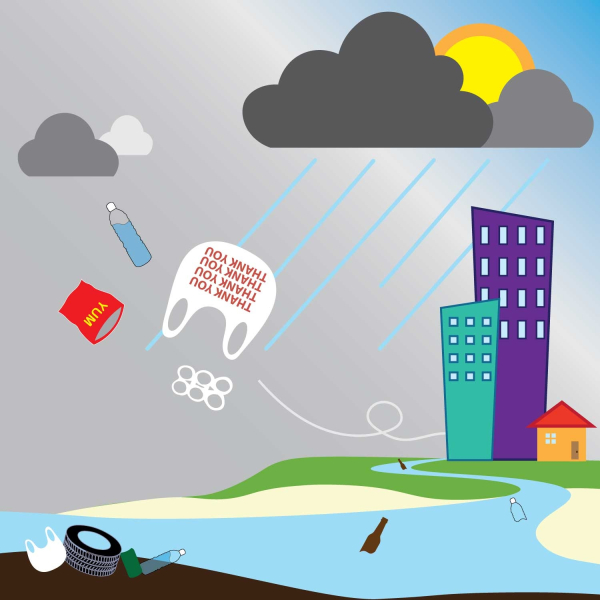
Just like people who travel around the world, our trash travels and it can go pretty far! Even if it’s dropped in an inland location, litter can easily become marine debris. Then it can move around the ocean, being pushed around by wind and currents, and traveling to far off locations, from remote islands to the depths of the ocean.
The first stage of the journey for many pieces of land-based debris is through the local watershed, or drainage basin. All of the rain, snowmelt, or runoff in a watershed will channel into a common body of water, along with any debris it picks up along the way. Stormwater, for example, can easily sweep any debris along a city street away into a storm drain, where it can be transferred to local waterways and, eventually, the ocean.
After its exciting ride through the watershed, that land-based litter can end up entering the ocean. But that’s far from the end of the story! The water in the ocean is constantly moving, and currents and winds can carry marine debris to far-flung places. Large rotating currents, called gyres, can pull debris and other objects into its center, where it can be spread out at the surface of the ocean, float just below the surface, or sink all the way down to the seafloor.
The North Pacific Gyre contains the Great Pacific Garbage Patch, a large area where our trash, fishing gear, and other debris collects. The swirling current pulls the debris into the gyre’s center, forming a “patch.” However, “patch” is a misleading nickname, causing many to believe that there is a floating island of trash. Debris that collects in the gyre can spread all the way to the ocean floor, and that debris can range in size from large abandoned fishing nets to tiny microplastics. In fact, it is possible to sail through some areas of the Great Pacific Garbage Patch and see very little to no debris.
So what will happen once that bottle has made it all the way from the park to a gyre? How long will it last, and where will it end up? Unfortunately, the answer isn’t simple. That plastic bottle may travel out of the gyre and end up on a shoreline, sink to the ocean floor, or break apart into smaller and smaller pieces, and never fully go away.
Once it starts traveling in the ocean, marine debris can be difficult to remove. Prevention is key to solving the marine debris problem over time and stopping this problem from growing. Marine debris is a problem caused by people, which means that people must also be the solution. There are many ways that each of us can become a part of that solution, from refusing that plastic straw with your drink to finding reusable alternatives. Together we can prevent debris from traveling.

